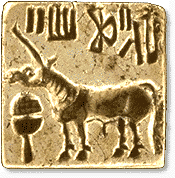Assessment of Parpola's Model of Decipherment

One can try to assess Parpola's decipherment at two levels. First, one can analyse his interpretations and readings of individual signs, some of which I have attempted above. To sum up, problems arise at this level due to implausible identification of pictorial signs, arbitrary assignment of values to non-pictorial signs and diacritic-like marks, and doubtful classification of basic, composite and variant signs.
There is also uncertainty in fixing the context of occurrence to provide clues to likely meanings, and linguistic problems in the handling of Proto-Dravidian reconstructions and choice of homophones. These specific problems are important and may have to be sorted out in the light of constructive criticisms from experts in the related disciplines.
Secondly, and even more importantly, one may look at Parpola's model of decipherment holistically to assess its overall plausibility and the likelihood of its being the generally correct solution. At this level the two major problems as I see them are Parpola's excessive, almost obsessive, preoccupation with the 'Harappan religion', and the inexplicable absence of matters relating to the social life and administration of the Harappan polity, which one may reasonably expect to be recorded in the Indus inscriptions.
Parpola's interpretations rely more on mythology than on textual or linguistic analysis. For example, his interpretations of the 'fish' signs are mainly based on his iconographic identifications of the 'Proto-Siva' and 'Fig Deity' seals which lead him to believe that the signs must represent not merely stars or planets but also gods. To him, the 'fish' sign is "not simply a phonetically used grapheme, but a highly condensed religious symbol" (p.272) (with) "unbelievably rich symbolism" (p.274). Parpola ranges far and wide in search of supporting evidence from the vast resources of Hindu religious texts and traditions. As one goes through the last part of his book dealing with decipherment, the overwhelming impression one forms is of a treatise on Harappan religion rather than decipherment of the Indus script.
Archaeological evidence points to the presence of a centralised administrative structure in the Harappan cities employing a large bureaucracy. Since almost every household has yielded at least one seal, it is only reasonable to expect that the seal inscriptions would mention, besides names, the professions or callings of the seal-holders like those of scribes, city officials, tax colIectors, merchants, sailors or armed auards. Judging from the short votive inscriptions of later times, one may expect at least some kinship terms like father, son, wife or daughter to occur in the Indus inscriptions too. Granting that the seal-texts are probably only strings of names and titles, and assuming that the writing is mostly logo-graphic, it would still be necessary to employ minimally parts of speech like pronouns, conjunctions and verbal participles and also grammatical morphs to indicate person, number, gender and case.
The near-total absence of matters relating to the mundane, everyday concerns of the Harappans, and of the minimal linguistic features expected even in short texts is perhaps the strongest argument against accepting Parpola's model of decipherment in its present form.
Parpola is too good a scholar not to be aware of the "grave limitations"" like the difficulties in pictorial interpretation of the simplified signs and the scantiness of the available inscriptional material. Thus he concludes his presentation with these words: "For these reasons it looks most unlikely that the Indus script will ever be deciphered fully, unless radically different source material becomes available. That however must not deter us from trying" (p.278). Amen.
